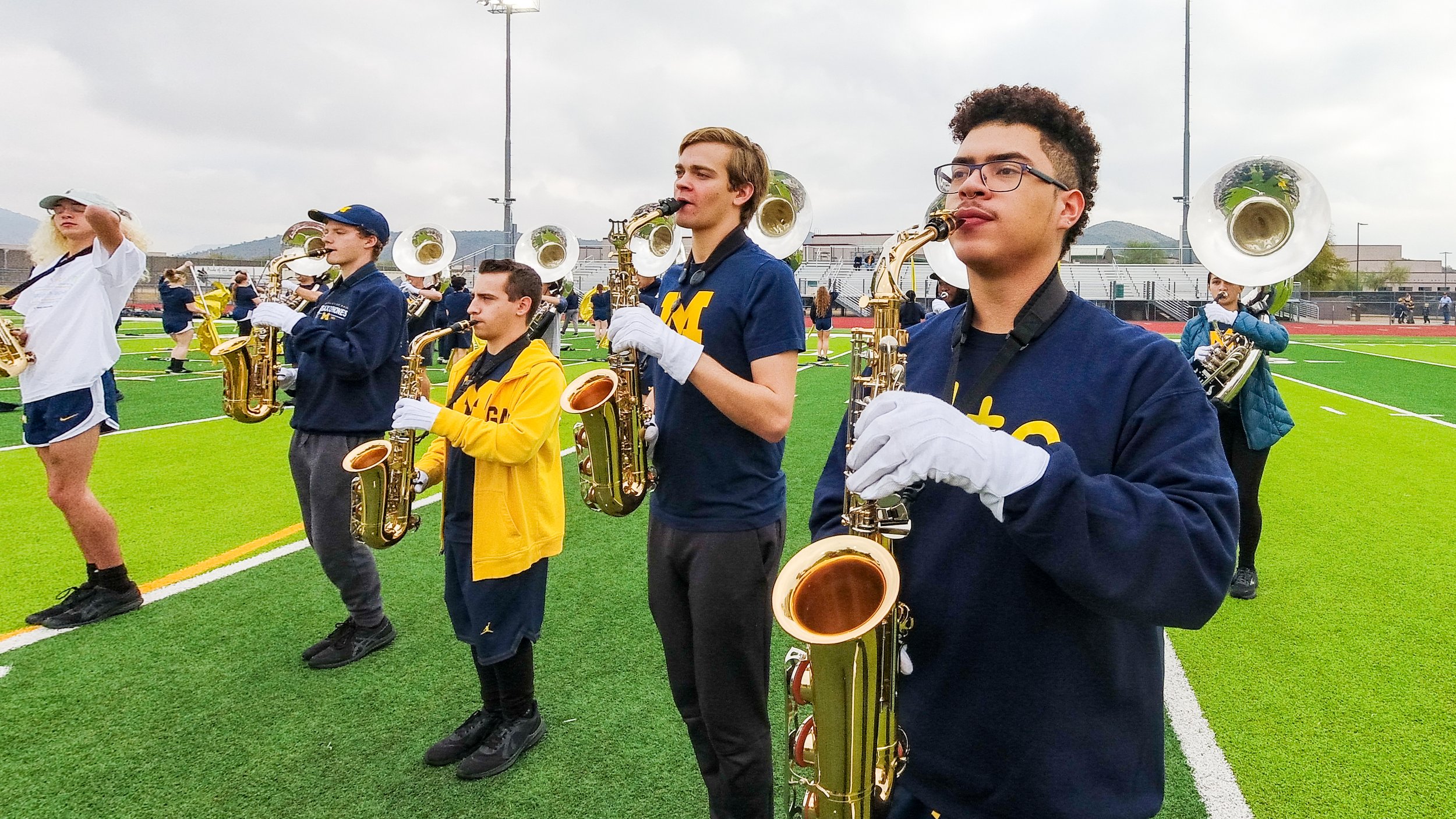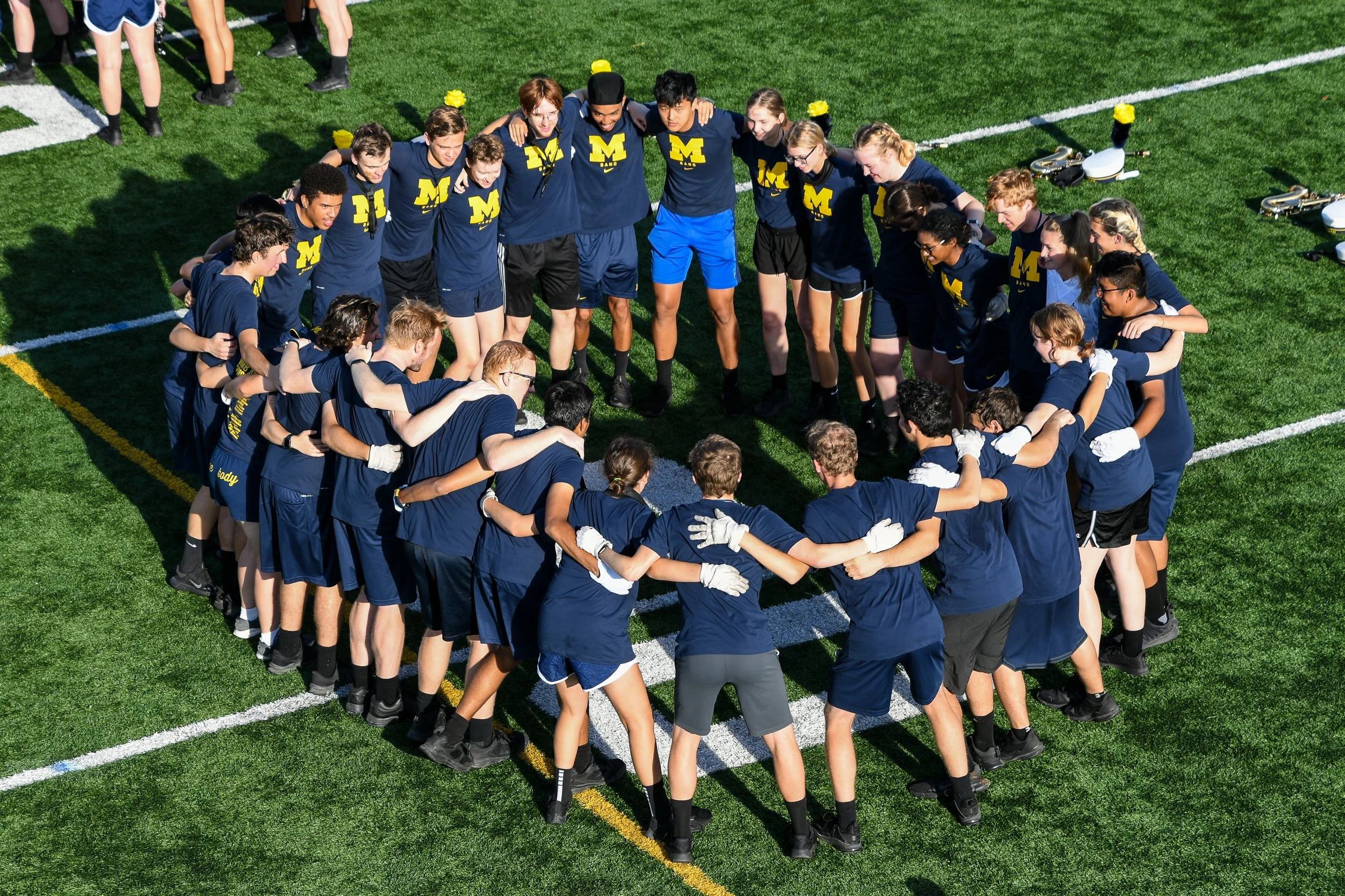Student Spotlight: David Michael, Alto Saxophone
While alto saxophone had been David Michael's first instrument, high school was a perfect time to explore other woodwinds. So when their band director asked Michael if they wanted to learn bassoon over the summer going into junior year, Michael accepted. In fact, it was this same passion for learning music that led Michael to pursue a degree in music education.
"Music had my heart," Michael said. "I figured out that I really look up to [my band director]. I realized I want to be that person that helps students learn music. [Music education is] a way to pay it forward, a reciprocation of my music education. I can't really see myself doing anything else. I want to be a music teacher no matter what."
The music education program at the School of Music, Theatre & Dance (SMTD) is a small program within the school that focuses on giving students hands-on experience in music education.
"My experience so far has really been a personal journey of figuring out how I learn best,'' Michael said. "I get so much new music through ensembles, private lessons, exploration and classes. When I figure out how I learn music, I can figure out how others learn music as well. I am a music educator. I get to learn how people learn. I value how much my department places an emphasis on field work. One thing you can do is sit in class all day and read from a textbook or go out into the world and observe students and what they are like and teach the best way you can."
As a part of the music education coursework, Michael has hosted visiting bands at Revelli Hall and had observation periods of instructors teaching their students. In addition to their coursework, Michael is a part of Crescendo Detroit, a program dedicated to providing additional courses to students in the Detroit area. The programs range from music and vocal performance, to dance, to the appreciation and production of music. This past year, Michael designed and taught a course focused on the history and appreciation of Rhythm and Blues (R&B) music.
"My directors gave me free reign to design my curriculum," Michael said "There's never really courses on [R&B], even though it's really big. I gave them my layout and they really liked it. I'm Black and many of my students are predominantly Black and R&B is largely Black music, so my students are already familiar with the subgenre, time period and the artists because it's what they grew up listening to."
Michael incorporated many dynamic activities, including a 'Just Dance' activity, where students danced to music from the R&B artists they had learned about throughout the course.
"The first thing we would do when we got to class was update our class playlist," Michael said. "It cycled really well because I could incorporate songs from the playlist into the next lesson, and they were more engaged. Some days I would take half my lesson to have a discussion about how music makes us feel and what we appreciate about the music we listen to. We would listen to a few songs from the class playlist and draw pictures and free write. It helped them consider what emotions they felt while they were listening. Some of my really quiet students really opened up with that activity, which made me really happy. I kept all the drawings and posted them all around the classroom on the last day."
The organization also offered professional development courses for the music education students, including a roundtable discussion with the parents of the students.
"Some students might come from compromised home situations, or have different learning abilities, some are on the spectrum and it can be harder to gauge their enthusiasm, or sometimes students have bad days," Michael said. "It's so important to meet them where they are at. One lesson, they might be really engaged, and other days, maybe they just need a space to be. If my class is somewhere to sit for 30-45 minutes, I want to make this as fun as possible. A lot of the students really enjoyed the class I taught because it was the first semester we did it. Your students are people that have so many factors playing in their life all at once. A lot of them will have very different backgrounds. It's so worth it to go the extra mile to cater lessons in different ways to fit different students and learn who they are. Gauge lessons to make up for what they might have missed out on when they had a bad day, or give them supplementary material for students that go the extra mile."
At the end of each day, the program had guest spotlights from different artists. After the term was over, the music education students presented the progress and accomplishments made within the program.
"The non-profit fundraises to gift a student who has been in the program for a while with a new instrument. One of my students was given a new flute. She had gotten into the Detroit School of Arts. It's so great to see a student of mine have that kind of success."
Michael strives to help his students build a good relationship with music and make music more accessible.
"When you enter the room, you should know you are shaping their relationship with music," Michael said. "We hope our students keep music in their lives, and we want to encourage anywhere the student shines musically. A lot of times music comes with a big price tag: paying for materials, summer programs, lessons, school. Making those programs more accessible to more students, especially students in rural areas or underfunded areas is so important; music is one of the first things to go."
On the field, David Michael is a member of the alto saxophone section.
"Life in the alto section is a trip," Michael said. "It's 30 people who are extremely talented, funny and light-hearted. [The altos] are people you want to surround yourself with because they will support you. If one person is struggling, we know how to push them. As section leader, my goal is to help push them forward. Whether new marcher or senior, you deserve to be someone who can give feedback and step into a leadership role. I also want to be as efficient as possible at learning and memorizing music and focus on how I teach music as an educator."
While the time commitment can be intense, Michael has found efficient systems to get work done.
"You are the maker of your own schedule and keeper of your own time," Michael said. "We are pre-professional musicians training to be the best in our field. The MMB and SMTD commitment is doable: we have students that do both. It's just about balancing classes, going to rehearsals, practicing every day. After rehearsal, I went to the music building and practiced from 8 to midnight. I would have gameday Saturdays and work on Sundays. Even with that, it was still do-able. If you really love band, I say go for it. This has been an experience I will treasure and look back at. It gives me joy. I love that I can surround myself with the things that I love. It's not impossible, it just takes some planning and organization, supplementing time and energy to gain opportunities to study music and know how you train and learn. UM has so many opportunities, you'd be damned to not take every opportunity you can. Do it all. Why not?"




